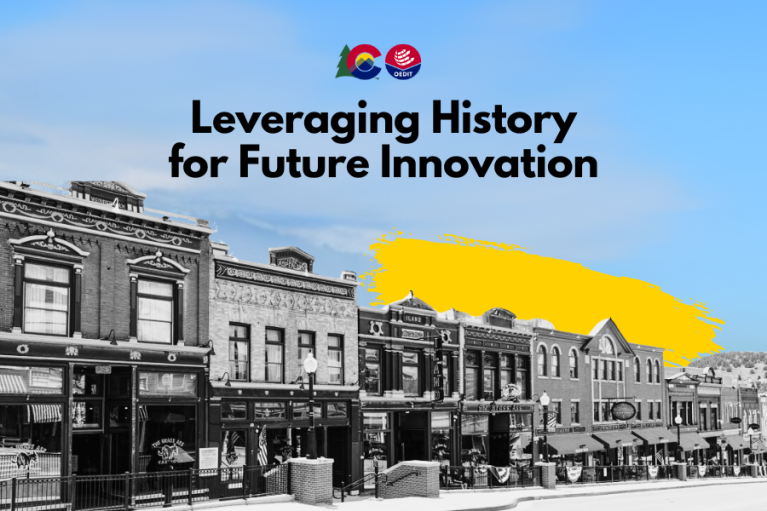History plays a significant role in the present and future. It offers reflection from lessons learned, fond memories, and valuable stories worth retelling. Colorado is rich in history, and a physical embodiment of this is through the historic buildings that remain a part of the architecture across the state. In some cases, these buildings are no longer in use or require some renovation which provides opportunities for Coloradans to reacclimate these buildings to help them become vital parts of their communities again. Through resourcefulness and creativity, Fremont, Logan, and Arapahoe Counties were able to accomplish this restoration.
The technology sector in Colorado added 9,680 jobs since 2019 (through end of 2022), which is a 19% increase and the seventh fastest growth rate for tech jobs in the country, according to the 2022 Colorado Tech Industry Report. This growth has been economically beneficial for the state and local communities, and as forward-thinking organizations relocate to places like Fremont County, seeking out unique, innovative program support is key.
To address this, Fremont County resourcefully sought support from the Business Funding & Incentives (BF&I) division of Colorado Office of Economic Development and International Trade (OEDIT) via the Commercial Historic Preservation Tax Credit (HPTC), which helps rehabilitate historic, owner-occupied commercial projects and provides up to $10 million in tax credits per year.
The building previously served as a hotel before a fire led the owner to abandon the space. Today, the renovated Orecchio building functions as a hub for remote and tech workers with 9 housing units available thanks to the support of the program.
In Sterling, the largest town in Logan County, the early twentieth century historical Carnegie Library served as a public library for 58 years until 1976. The building, which is listed on the National Register of Historic Places, became a bed and breakfast and then a private residence before becoming the rural gem it is today.
Currently, the beautiful building, located in Sterling’s historic town square, retains its elegant nature and reflects the people and places of rural America. Now named The Old Library Mercantile, the space serves as an eclectic home decor, western art, and kitchen goods store that also provides opportunities for the community to gather through the coffee shop or by attending a local event or workshop.
According to the 2023 OEDIT Annual Report, in FY 22-23, 47 projects representing more than $84 million in estimated qualified rehabilitation expenses were approved for $17,311,853 in state income tax credits. The tax credits are waitlisted and reserved, then issued once the rehabilitation project is complete and the building is ready for commercial activity.
Over 200 buildings have been rehabilitated since the program’s modification in 2016. To see how effective this program can be for local economies, it’s great to look back on one of the first projects, The Stanley Marketplace in Arapahoe County, which was transformed into a one-of-a-kind shopping area. To become the modernized space it is now, the renovation served to house offices, service organizations, retail, professional and management organizations, and more. As a result of this building’s evolution, over 1,300 new jobs were created and is now recognized as a beloved spot to shop from a wide array of local, small businesses, enjoy art programming, and try a vibrant collection of food and beverage options.
The tax credit allows developers to utilize aged and vacant buildings from the past to better serve their communities. In a symbolic sense, history functions as an effective tool to jumpstart an economy centered around change and evolution. It will be exciting to see how Colorado’s historic buildings continue to stimulate local economies and evolve over time.
For more information on the HPTC and its impact throughout Colorado, please visit the HPTC webpage.
